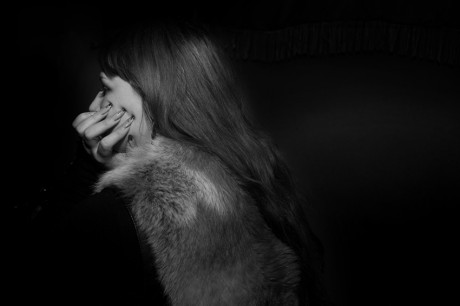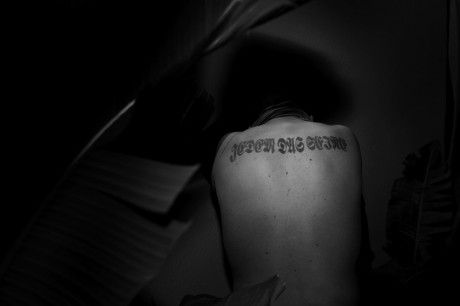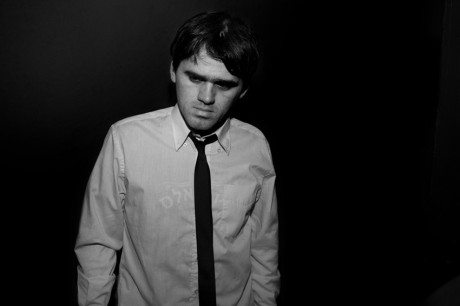סשה פליט | אור נופל
19.04.12-15.05.12
אוצר | אורי גרשוני
Close your eyes for a moment turn your gaze straight at the sun and then open your eyes.
As if by magic, under cover of the temporary blindness, day turns into night –
a wonderful white night.
“It was a wonderful night” – this is how Dostoyevsky opens his story “White Nights”.
This night is different from all the other
nights: it is so starry and bright. But the wonderful nocturnal light soon reveals
the loneliness of the story’s protagonists, the darkness of their lives.
Sasha Flit’s photographed protagonists, like the protagonist of Dostoyevsky’s story, are also dreamers. In their dreams they escape the blinding light of the scorching Mediterranean sun. Haunted, tormented and dripping with sweat they wake up to the cool night.
Only the thick blanket of darkness protects the night creatures from the cold, under the black night they huddle and hunch together. Proximity produces warmth and the warmth produces humidity, in these hothouse conditions they
Fulfill the potential to interweave and grow. In the black quagmire the black narcissi blossom in the black quagmire.
Looking down, Sasha’s narcissi see nothing, not even their own reflections. Nor can they see anything when they look straight ahead; their sight is plundered by the direct light of the flash, by Sasha who wishes to see them better, if only for the blink of an eye. Fright is the reflection of sight. Those being photographed try to protect themselves the best they can from the photographer armed with a camera: they cover their faces, hide in their hands and turn their backs. They acknowledge the annihilating and deadly power of the one who peeps and records. The testimony marks the present and the concrete, whereas they wish to dream, to daydream.
Whoever lives his life at night, whoever does not sleep, does not give him/ herself up to the dream. Their dreams are awake and disturbed but they do not despair, they try with all their might to retrieve their hold on the dream, their ownership of it. The dreamers are those whose inner world and objective reality become indistinctly confused in their minds.
In the intermediate stage, on the verge of waking, they are trapped: between waking and sleeping, between reality and dream, between blindness
and sight. Up ahead those being photographed are threatened by the exposing and blinding light, directing the gaze backwards holds no less of a threat, turning the back and the head involves taking a risk. Orpheus has taught them about reward and punishment and that turning the gaze is punished by ruin. If you look into your past you will lose your future, if you go down to the underworld your life will be Hell.
The blind can look into the blazing sun, those being photographed are not blind, the light of the flash injures them. They see with great difficulty but are easily seen. Raising their arms, twisting their backs, they bare their abundant bodies and appearances: flesh, skin, hair, decorated fingernails, and tattoos. The hands are raised up in the air, dropped down to the ground, stuck into the living flesh.
The light that falls on the body is reflected back from it, the reflected light constitutes the image. Not all the light is reflected back, some of it is absorbed – among the folds of the fabric, behind the walls, inside the body. A body that will reflect back no light will not be seen. In the refusal to get absorbed, in the obstinacy of the body, those being photographed stand like road signs directing our way, like witnesses to an accident that has not yet happened.
We, who see the photograph and are seen in it, realize that: “Self-awareness is a supreme gift, a treasure as precious as life. This is what makes us human. But it comes with a hefty price: the wound of mortality. Our existence is forever shadowed by the knowledge that we will grow, blossom, and, inevitably, diminish and die”.*





